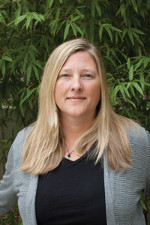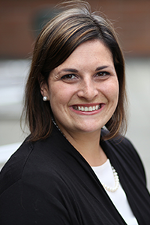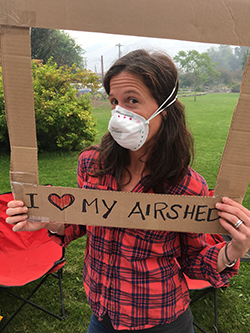
Summer’s smoky skies prompt call from DEOHS researchers for better communication about health risks
[Reprinted with permission from the new 2018 edition of Northwest Public Health magazine.]
For the past two summers, the western part of the United States has experienced extraordinary wildfire seasons.
Dominated by longer burns, fires in locations not previously thought to be at risk, and significant smoke in dense urban areas, these events were a wake-up call to communities with little or no experience dealing with them.
To improve our risk communication efforts and keep everyone healthy and safe from wildfire smoke, we must find more ways to collaborate with and draw from the valuable expertise and perspectives of practitioners, researchers and community members.
Smoke impacts in Washington


In August 2018, there were few, if any, places to escape from unhealthy air in the entire state of Washington.
In fact, the Puget Sound experienced its worst 24 hours of air quality on record, and central and eastern Washington were blanketed in smoke for several weeks. Last year, fires also resulted in moderate to unhealthy air quality in the first two weeks of August and again in early September in western Washington.
At the same time, we also experienced higher-than-average summertime temperatures, presenting a unique challenge for our densely populated urban areas, where air conditioning is largely unavailable.
In central and eastern Washington, residents experienced even worse air quality resulting from local wildfire events as well as those occurring in British Columbia and neighboring states.
What are the health impacts?
There is a growing body of research contributing to our understanding of the health impacts from wildfire smoke. Associations between wildfire smoke exposure and respiratory health outcomes, including asthma and chronic obstructive pulmonary disease, have been consistently demonstrated in the literature.
Yet there remains uncertainty. For example, consequences of long-term exposure and relationships between exposure and health endpoints, such as cardiovascular disease and mental health issues, are less well understood, and specific at-risk populations are not well defined.
Since most wildfire smoke-related health outcome studies look at impacts related to hospitalizations and mortality, the complete picture of wildfire smoke’s public health burden is elusive. The use of the most severe health outcome data limits researchers’ ability to detect statistically significant differences in health impacts of smoke exposure.
Using data from rural communities that lack population density, where wildfire smoke exposure is the worst, adds to these statistical challenges. And as wildfires engulf homes, businesses and chemically treated lands, what we know about the composition and health hazards of smoke is changing.
The challenges of wildfire smoke risk communication

Local health jurisdictions in rural communities, often strapped for resources on a good day, bear the burden of wildfire smoke health-risk communication.
At the same time, staff and their families may be personally impacted by the wildfires. Another complicating factor for health-risk communicators is their reliance on federal and state air monitoring systems that provide air quality information at a regional level. Because these systems often use a single monitor to assess the air quality of a large geographical area, they provide limited information that can be used to understand and communicate local risk.
For example, information from these systems usually lacks sufficient resolution to determine if youth sporting events should be moved to a different location where there is better air.
Nonetheless, risk communication activities must seek to change behaviors in communities that have dealt with wildfire smoke for generations while reaching hard-to-access populations such as tourists and seasonal workers.
Common protective actions, such as staying indoors when smoke is visible or minimizing strenuous outdoor activities, may no longer be sufficient to protect health given prolonged exposures and increasing severity of air co

ntamination.
Without access to air conditioning, staying indoors during smoky, hot summer days is just not an option for many Northwest residents. These protective actions may also be in direct conflict with the economic interests of rural communities that rely on seasonal outdoor workers and outdoor recreation to sustain them year-round.
Yet the efficacy of emerging interventions, such as clean air shelters and distribution of N-95 masks to untrained community members, remains largely unknown.
Collaborating to improve resilience to wildfire smoke
The University of Washington’s ColLABorative on Extreme Event Resilience (CEER) is working with communities in the Northwest to improve their preparedness for wildfire smoke.
This summer, CEER students worked with the Methow Valley Clean Air Project and local health jurisdictions to assess the wildfire smoke health information needs of organizations serving at-risk populations.
CEER also planned an October 2018 Wildfire Smoke Stakeholder Synthesis Symposium to bring together public health practitioners to share ongoing practice-based needs, as well as identify opportunities to collaboratively address wildfire smoke, health and risk communication challenges.
As our climate continues to change and our communities at the wildland interface grow, we can expect that wildfires and the smoke that they produce will become an increasingly important public health hazard in the Pacific Northwest.
By working together, academics, practitioners and communities will be ready to tackle wildfire smoke and other challenges that climate change throws our way.

